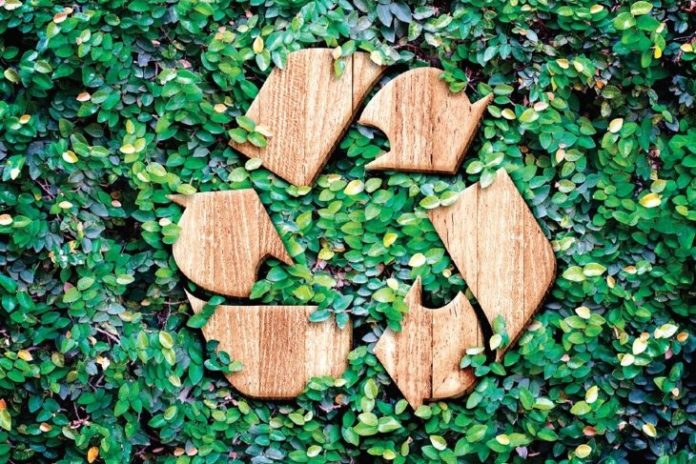
Back in 1981 in the town of Kitchener, Ontario, a garbage collector named Nyle Ludolph spearheaded a pilot recycling project. He came up with an idea: to encourage participation, provide people with a special blue box labelled “We Recycle.”
The amount of recyclables collected was triple what was expected, with requests coming in daily from other residents wanting in on the bin. The “Father of the Blue Box” has since passed, but his legacy lives on. The blue box became a blueprint for recycling programs in more than 150 countries around the world.
Canadians from coast to coast to coast recycle—or at least think they do. Despite good intentions, many people aren’t recycling correctly, or well. Ignorance of contamination and proper recycling practices means that items that were intended to be recycled wind up in landfills.
Contamination rates
According to news sources, these rates vary widely across the country:
Toronto: 26%Edmonton: 24%Halifax: 21%Fredericton: 14%Calgary and Winnipeg: 13%Ottawa: 5%Vancouver: 4.6%
We can do better
Poor recycling practices are having a measurable negative impact: Canada ranks 20th globally in meeting United Nations’ Sustainable Development Goals, falling behind Slovenia, Ireland, and Korea, among other countries, according to the United Nations. Managing our waste was identified as a major challenge, with irresponsible consumption and production identified as another crucial weak point.
The 2018 report found that Canadians produce 4.2 lbs (1.9 kg) of nonrecyclable solid waste per person on average every day, putting the country behind the US, Japan, Australia, and China in terms of waste production.
Widespread confusion
Partly explaining these troubling figures is that every municipality has different recycling systems and rules. What may be recyclable in one jurisdiction might not be in another. Single-use coffee cups are a great example. Though generally made of paper or cardboard, the inside is lined with plastic polyethylene. If they’re empty and rinsed, many (but not all) curbside programs accept them as containers, provided the plastic lid is removed and placed in its proper spot for recycling.
Some places require residents to separate paper, plastic, containers, or glass; others have “single stream” programs, where everything goes into the same container and is sorted at the station.
“We find people have a lot of confusion,” says Kathleen Barsoum, waste coordinator for the Region of Waterloo. “Recycling has been around for a very long time, and people forget to check to see what’s changed. You have to keep checking, because types of packaging are always changing.
“Each number on a piece of plastic means a certain chemical formulation,” she says. “If it’s a 1 or 2, it can’t mix with a 4. They’re different types of materials and have different melt temperatures. Recycling programs work, but people have to be in tune with what they can put in there.”
Contamination concern
Contamination is a major problem. When the right materials are wrongly prepared, they are rejected and often deemed garbage. For instance, oil, grease, or excessive food residue can’t be left in containers; those substances can spread, affecting the recyclability of other items and potentially contaminating an entire load. If cans or bottles are placed in a plastic bag, then put in a recycling bin, they end up going to the landfill, too.
When incorrect items are put out for recycling, it drives up operations costs. Those items have to be sorted and removed at a processing facility and sent to other recycling depots (for batteries, for example) or the dump (such as most foam, toys, and clothing hangers with clips).
Hazardous materials (including medical sharps) or containers with any remaining contents not only contaminate recyclables, but also pose a health and safety risk to workers. Propane tanks and butane cans are extremely dangerous and have even caused fires at processing plants.
“Danglers”—ropes, electrical cords, cables, and garden hoses—pose particular problems. “Danglers can get caught in recycling equipment and force recycling operations to shut down until they are removed,” says David Lefebvre, director of public affairs at Recycle BC.
All of these forms of contamination reduce the ability to recycle effectively or meet the requirements of recycling markets. If a material can be recovered, contamination will reduce the commodity value of recyclables.
“There’s a lot of ‘wish cycling,’” says Vito Buonsante, plastics program manager at Environmental Defence. “When somebody buys a product, it’s their responsibility to deal with the packaging.”
The best and easiest way to determine what can and can’t be recycled and where to recycle it is to visit your jurisdiction’s website, app, hotline, or social media platforms. Most of these resources have other useful information, including locations of nearby depots for items that can’t be recycled at the curb, such as batteries, electronics, and plastic bags.
“Recycling is one of the easiest things you can do to help protect the environment,” Lefebvre says. “The easier you make it for yourself, the more likely you are to do it. Know before you throw.”
Get the kids involved
Give kids their own recycle bins
Set up smaller bins in kids’ rooms and bathrooms so they get used to recycling things such as paper and toilet paper rolls.
They could even decorate their own boxes. Once those containers are full, transfer them to larger recycling receptacles.
Take them shopping
When shopping, have kids hunt for products that are recyclable in your area.
Use online resources
Visit US Environmental Protection Agency’s Recycle Cityor Turtle Diary’s Recycling Waste, which have learning games and activities.
Lead by example
Be a role model for your kids by diverting waste.
The two other “r’s”
While recycling is a fantastic way to help protect the environment, it should still be looked at as a last resort after reducing
and reusing.
- Bring your own cloth bags for produce and bulk, and reusable shopping bags for other groceries.
- Look for zero-waste grocery stores where you bring your own containers for everything from olive oil to herbs.
- Pack reusable water bottles and cutlery for school and office lunches and for outings such as picnics and hikes.
- Repurpose clothes by holding a clothing swap with friends.
Did you know?
Every jurisdiction has its own rules, but there are many items that can usually be recycled or composted that people may not be aware of.
Compostable:
- coffee grounds
- tea bags
- wooden chopsticks
- corks
Recyclable:
- cellphones and computers (research to find facilities near you)
- overwrap (the plastic packaging around products such as diapers, paper towels, and flats of pop) and resealable sandwich bags (research to find facilities near you)
- cardboard egg cartons (some cities accept foam)






























